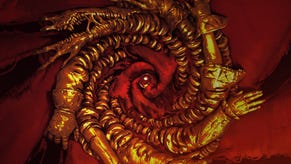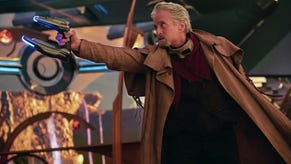Tanglewood: the ultimate retro revival to celebrate the Mega Drive turning 30
When I learned there was an all-new game for a thirty-year-old console, I had to check it out - and Tanglewood would've been a worthy official release back in the Nineties.
The Mega Drive holds a special place in my heart. It was my first proper console, and I have two feelings very specifically associated with it: initial crushing disappointment when I unwrapped it one Christmas and discovered it wasn't a PC, followed by wonder and joy as I popped in Sonic the Hedgehog, Golden Axe and Super Hang-On and realized it was, well, actually sort of better. Rose-tinted glasses and all that, yes, but those feelings are still rarely bettered by even my favourite of today's games - and I still keep my Mega Drive permanently hooked up in my office.
Tanglewood is impressive for a few reasons. For one, the release is a truly indie venture: the bulk of the work is essentially a one-man project (though others have assisted with art and music), and has been created in the most authentic way possible: on scavenged original Sega devleopment tools from the era and programmed in raw 68000 assembly language. In the likes of Sonic Mania and Streets of Rage 4 we're seeing a lot of retro Sega revivals, but this is an authentically-made throwback - and of course it has to be in order to run on the original hardware.
Authenticity is the name of the game, then, and in this Tanglewood is an impressive feat. It's being released on an actual Mega Drive cartridge, but there's also a version of the game on PC that even comes packaged with a Mega Drive ROM file so you can also play the game on the external MD/Genesis emulator of your choice. I've tested both versions - a physical cart and the Steam release - and found both to run well and in an era-appropriate manner.
Probably the most interesting thing about Tanglewood, however, is that it doesn't really feel all that much like a Mega Drive game in terms of design. I tend to associate the Sega console with more bombastic, explosive, in-your-face games, while I consider the Super Nintendo the home of slower, more contemplative titles. Tanglewood is certainly the latter, a puzzle platformer that seems to delight in its mixture of an easy-going pace and a challenging difficulty.
At first you're mostly worried about the platforming sections, taking Fox protagonist Nymn through a beautiful world while avoiding enemies and dangerous pitfalls. Slowly but surely you're then faced with small puzzles to hold up your progress; you might need to find a way to incapacitate an enemy or move blocks in order to create a path, for instance. The controls are sometimes a little floaty for my tastes, though one also gets the impression this is by design to aid the game's difficulty balancing.
Nymn is weak on his own, but some creatures out in the world can imbue him with powers that can allow you to perform other useful abilities that can either help you find alternative ways forward or open up the obvious path in front of you. These skills aren't explained fully as you'd expect for a text-light 90s-style game, so it's up to players to experiment. The puzzles never become truly stopped-in-your tracks challenging, but the pace of the game and the way the action switches gears back and forth makes for an entertaining experience.
This is really interesting as it ultimately provides a game that is fairly unique in my Mega Drive cart catalog. That's a fascinating new wrinkle in this recent retro revival - that all-new games for these systems aren't just used to stoke fuzzy feelings of nostalgic familiarity with games directly inspired by classics of the era, but also to create experiences for those systems that aren't quite like anything the platform has seen before. Tanglewood feels right at home snug in that Mega Drive cartridge slot, and it has me wishing for a new, highly-accurate modern Mega Drive system in the vein of the Super NT.
All of this comes with caveats, of course - and it's mostly related to those previously-mentioned rose-tinted spectacles. Most 'retro revivals' like Sonic Mania or the Sonic-inspired Freedom Planet look more like how we fondly remember 16-bit games looking rather than how they actually did. They employ tricks, techniques and a range of colour simply impossible on the original hardware: and so comparatively, one might easily consider Tanglewood as looking a little lacklustre - but by the standards of the day this would've been regarded as a good-looking game with some impressive technical touches. Now's a good time to mention that the animation in this game is lovely, also.
The trend of new retro-styled revivals and sequels is now well established, but Tanglewood nevertheless feels like something unique. It feels apart from the other attempts in many ways - in its release method, its design and its sense of style. Perhaps the biggest compliment I can pay to it is this, however: its search for accuracy and authenticity and the gimmick of developing using original Mega Drive tools is entirely validated. As the Mega Drive turns thirty, it's brilliant to see a new release - but more brilliant still to see one that could've fit right in and probably would've been a great success back in the Nineties.










